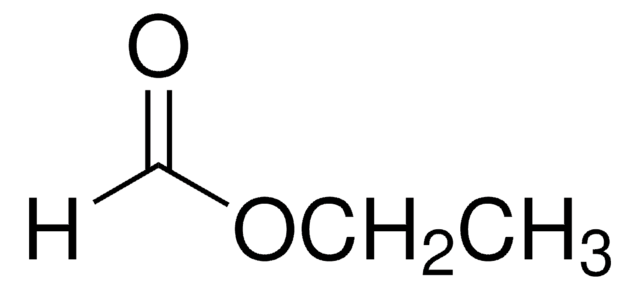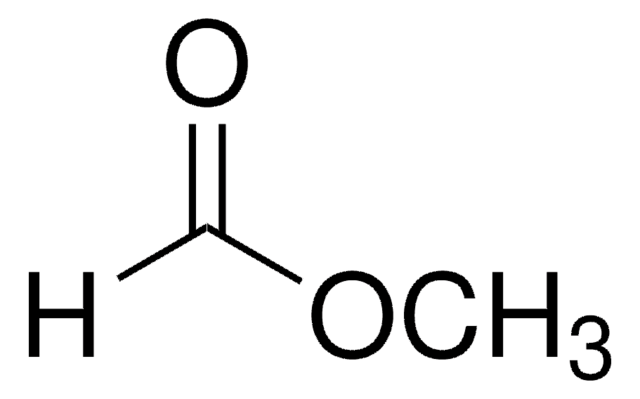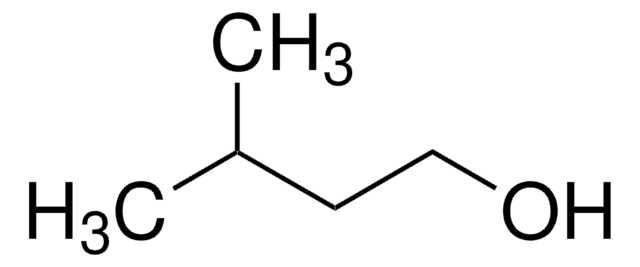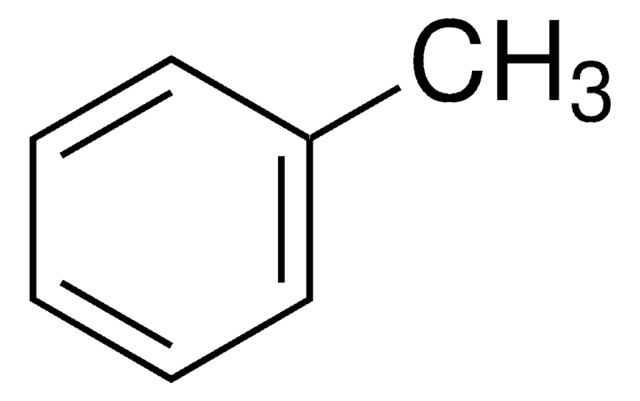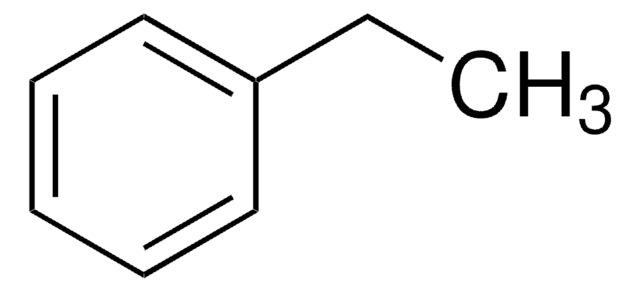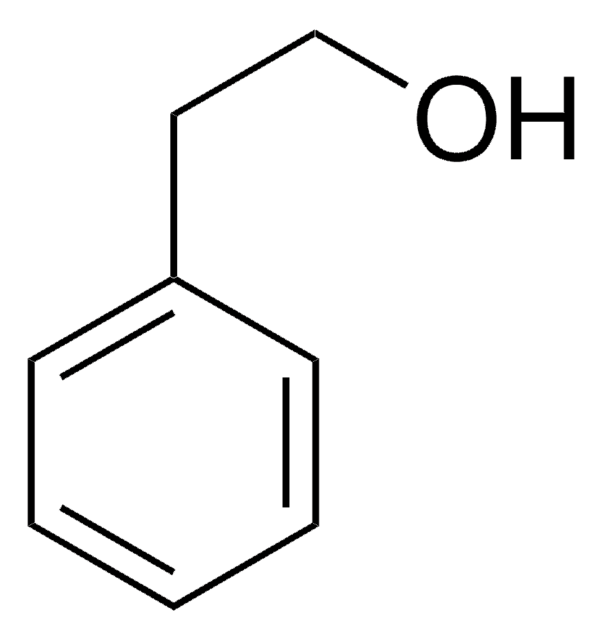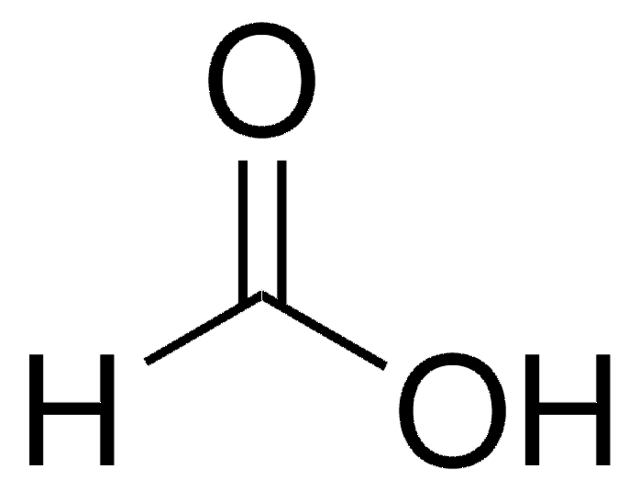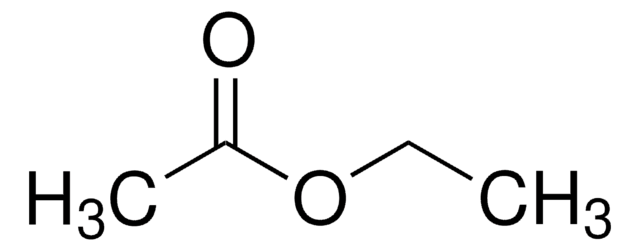88554
Ethyl formate
analytical standard
Synonym(s):
Formic acid ethyl ester
About This Item
Recommended Products
grade
analytical standard
Quality Level
vapor density
2.5 (vs air)
vapor pressure
15.16 psi ( 55 °C)
3.79 psi ( 20 °C)
assay
≥99.5% (GC)
autoignition temp.
851 °F
shelf life
limited shelf life, expiry date on the label
expl. lim.
16 %
technique(s)
HPLC: suitable
gas chromatography (GC): suitable
refractive index
n20/D 1.359 (lit.)
n20/D 1.360
bp
52-54 °C (lit.)
mp
−80 °C (lit.)
density
0.921 g/mL at 20 °C (lit.)
application(s)
agriculture
cleaning products
cosmetics
environmental
flavors and fragrances
food and beverages
personal care
format
neat
SMILES string
CCOC=O
InChI
1S/C3H6O2/c1-2-5-3-4/h3H,2H2,1H3
InChI key
WBJINCZRORDGAQ-UHFFFAOYSA-N
Looking for similar products? Visit Product Comparison Guide
General description
Application
Recommended products
signalword
Danger
Hazard Classifications
Acute Tox. 4 Inhalation - Acute Tox. 4 Oral - Eye Irrit. 2 - Flam. Liq. 2 - STOT SE 3
target_organs
Respiratory system
Storage Class
3 - Flammable liquids
wgk_germany
WGK 1
flash_point_f
-4.0 °F - closed cup
flash_point_c
-20 °C - closed cup
ppe
Eyeshields, Faceshields, Gloves
Choose from one of the most recent versions:
Certificates of Analysis (COA)
Sorry, we don't have COAs for this product available online at this time.
If you need assistance, please contact Customer Support.
Already Own This Product?
Find documentation for the products that you have recently purchased in the Document Library.
Customers Also Viewed
Articles
Butyl methyl ether; Acetic acid; 2-Butanone; Ethyl acetate; Tetrahydrofuran; 1-Butanol; Isopropyl acetate; Heptane; Propyl acetate; 3-Methylbutanol; 4-Methyl-2-pentanone; Isobutyl acetate; Butyl acetate; Dimethyl sulfoxide; Anisole; Cumene
Protocols
Protocol for GC Analysis of Class 3 Residual Solvents on SUPELCOWAX® 10
Our team of scientists has experience in all areas of research including Life Science, Material Science, Chemical Synthesis, Chromatography, Analytical and many others.
Contact Technical Service